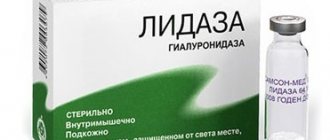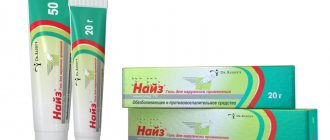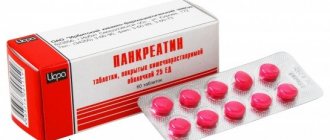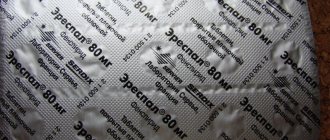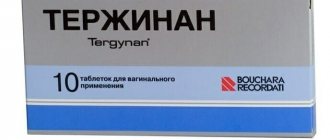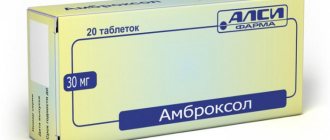Rheumatoid arthritis, translated literally from Greek, means a condition of inflammation. The question of what factors provoke the development of this disease still remains unclear. Indirect information that the number of leukocytes in the blood increases and the erythrocyte sedimentation rate (ESR) increases makes it possible to conclude that the process of disease development is of an infectious nature. It is believed that the impetus for the development of the disease is an infection that provokes disturbances in the functioning of the immune system. However, not everyone is susceptible to this, but only those with a hereditary predisposition. The result of the introduction of this infection into the human body is the formation of immune complexes (from viruses, antibodies, etc.), which accumulate in tissues and lead to joint damage.
In most cases, the treatment of this formidable disease consists of relieving pain, slowing down the progression of the disease and restoring damage (to the extent possible in each case) using surgical methods.
There are currently a great variety of drugs available for treatment. One of these is Methotrexate. For rheumatoid arthritis (reviews from health workers and patients confirm this information), the medication mentioned is quite effective, the results of its influence will be felt for quite a long time.
Instructions for use of Methotrexate
An antitumor, cytostatic agent from the group of antimetabolites is used in the basic therapy of rheumatoid arthritis, to achieve remission in bone marrow diseases, and to treat the early stage of psoriatic arthritis. The medication helps reduce the intensity of pain, stops the inflammatory process of joint destruction, prevents the division of cancer cells, and suppresses active inflammation. The drug can be prescribed before an accurate diagnosis is made, to relieve the first manifestations of the disease.
Composition and release form
The drug is available in the form of round tablets in bottles of 50 pieces, in ampoules for intramuscular or subcutaneous injections of 1.5 and 10 ml. Imported methotrexate-ebeve is produced as a concentrate for the preparation of a solution for infusion of 5, 10 or 50 ml. The detailed composition for each release form is indicated in the table:
| Release form | Active ingredient | Excipients |
| Tablets 2.5, 5 or 10 mg | methotrexate | cellulose, silica, corn starch, magnesium stearate, lactose monohydrate |
| Ampoules 10 mg in 1 ml | water for injection, sodium chloride, sodium hydroxide | |
| Concentrate 100 mg per 1 ml |
pharmachologic effect
The antitumor and cytostatic effect of the drug is achieved by slowing down DNA repair, cell synthesis and division. Tissues that have a high ability to grow are sensitive to the composition: embryonic cells, bone marrow, mucous epithelium and tumor tissues. The maximum concentration of active substances in the blood plasma is recorded after 30-60 minutes.
The composition of the drug breaks down into metabolites in the liver. 90% is excreted by the kidneys along with urine throughout the day, the remaining 10% is excreted along with bile. On average, the half-life is from 6 to 7 hours, when taking high doses - 17 hours. This process may be somewhat slowed down in patients with severe liver or kidney dysfunction. Metabolites can accumulate in the liver, spleen, and kidneys.
Indications for use
According to the instructions, taking the drug is advisable if the patient experiences processes accompanied by increased division of immune cells. Methotrexate is prescribed for:
- acute lymphoblastic leukemia;
- non-Hodgkin's lymphoma;
- lymphosarcoma;
- severe forms of mycosis fungoides;
- psoriasis;
- osteogenic sarcoma;
- cancer of the skin, mammary glands, digestive tract, urinary tract;
- psoriatic arthritis;
- rheumatoid arthritis;
- systemic lupus erythematosus;
- dermatomyositis;
- neuroleukemia;
- trophoblast tumors.
Composition and principle of action
The main active ingredient of the drug is methotrexate. It is a nitostatic, an antagonist of folic acid. Currently, to slow down the development of rheumatoid arthritis, treatment with Methotrexate is used more often than other methods. In essence, this medication is an antitumor, cytostatic agent, inhibits mitosis (indirect cell division), slows down the growth of actively proliferating tissues, and inhibits the development of tumors.
According to statistics, the effectiveness of the medication is observed in 80% of patients, positive dynamics become noticeable 2-6 weeks after the start of the course of therapy. After a long period of treatment (up to 5 years), Methotraxate therapy is discontinued much less frequently than any other medications used to slow the development of rheumatoid arthritis.
Directions for use and dosage
This drug is included in many drug treatment regimens, and therefore the route of administration, course of therapy and dosage are selected individually by the attending physician. Methotrexate in ampoules is administered intramuscularly, intravenously, intrathecally (under the membrane of the spinal cord) or intraarterially. Unused solutions and administration instruments that have been in contact with this medicinal substance are destroyed by burning.
Methotrexate tablets
The medicine in tablet form should be taken orally whole, without chewing and washing down the capsule with a sufficient amount of still water. To achieve optimal results and speedy absorption, it is recommended to take the tablets an hour before a meal or one and a half to two hours after a meal. Dosages are selected according to the patient's parameters. The instructions recommend using dosages of the drug from 7.5 to 16 mg per day at the initial stages of treatment. In severe cases, the standard daily dose can be immediately increased.
Droppers
High doses of the drug, usually more than 100 mg, are administered by intravenous infusion over a period of no more than 24 hours. To speed up the process, part of the dose prescribed by the doctor can be administered as an emergency intravenous injection. When choosing this treatment method, patients are additionally prescribed calcium folinate to protect normal tissues from the toxic effects of Methotrexate-Ebeve.
- Neurox in ampoules - instructions for use, indications, mechanism of action, side effects, analogues and price
- Ultracaine - instructions for use in dentistry, composition, indications, side effects, analogues and price
- Misoprostol - instructions for use for abortion, composition, side effects, analogues and price
Protective therapy begins 8-24 hours before the start of the main medication. Doses of calcium folinate are determined depending on the volume of the dropper:
- When receiving 100-150 mg, 150 mg of folinate is administered over 12-24 hours, then another 12-25 mg of calcium in injections or 15 mg orally every 6 hours for 2 days.
- When treated with doses below 100 mg, you need to take 1 capsule of folinate every 6 hours for 2-3 days.
Methotrexate injections
Intravenous, intramuscular or intra-arterial injections are prescribed for trophoblastic tumors, leukemia, and rheumatoid arthritis. Before administering the drug, part of the cerebrospinal fluid is removed in the volume in which the medicine will be administered. After opening the ampoule, the medication remains stable for 24 hours, after which the drug should be disposed of. Injections for rheumatoid arthritis are prescribed once a week, with the drug administered on the same day and time.
How to take Methotrexate for rheumatoid arthritis
The effect of the drug in the treatment of chronic joint inflammation is presumably associated with its ability to suppress the immune system. The use of this medicine allows you to restore joint function, reduce inflammation and symptoms associated with arthrosis - swelling, joint stiffness, severe pain. There is no single regimen for using the medicine.
To cure arthritis, doctors prescribe a minimum dosage of 6.5 mg. Then, after two to three weeks of therapy, the dose is gradually increased, bringing it to 26 mg. The recommended dosage is adhered to throughout the entire treatment, and the regimen for taking the drug in tablets remains the same as for the drug in injections - once a week. Sometimes the daily dosage is divided into two or three doses, which must be administered at intervals of 12 hours.
The effect of treatment for arthritis and arthrosis is not achieved immediately, but 5-6 months after the start of therapy. If the clinical effect occurs too slowly, the drug is combined with other drugs. Rheumatoid arthritis is treated with methotrexate and folic acid or medication:
- cyclosporine;
- leflunomide;
- hydroxychloroquine;
- sulfasalazine.
Treatment of lymphoma and leukemia
The drug is administered intravenously, intramuscularly, intralumbarally. For children diagnosed with leukemia, it is preferable to give the medication orally with water. For adults, the optimal dosage for injection is 200-500 mg per m2 (body surface area). The injection is given once a week, as with arthrosis or arthritis. Sometimes 2.5-5-10 mg is prescribed daily for 5 days. Active components affect the division of malignant tissues without harming healthy cells. The use of the medication helps to achieve long-term remission.
For psoriasis and mycosis
To prescribe the drug for the treatment of psoriasis or mycosis in the chronic stage, the patient must have at least 20% skin damage and a decrease in the sensitivity of the pathogenic flora to other topical medications or photochemistry. For psoriasis, tablets are prescribed in dosages of up to 25 mg per week. For mycosis fungoides of the skin or nails, solutions are used that are administered 50 mg intramuscularly once.
Treatment of neuroleukemia
The method of administering Methotrexate for neuroleukemia is intralumbar injections and irradiation of the head in doses of up to 2400 rad. The drug is administered 1-2 times every 7 days in dosages of 12 mg per m2 of body area. In the presence of extraosseous foci of autoimmune inflammation, which provoke the appearance of severe pain and compress nearby organs, additional local radiation therapy is performed in dosages of 500-2500 rads.
Tablet dosage regimen
In the treatment of malignant neoplasms, the tablet dosage regimen is developed individually and depends on the regimen of chemotherapy sessions. If we are talking about the use of the drug “Methotrexate” for rheumatoid arthritis (patient reviews are positive), then the initial dose is usually 7.5 mg once a week. You can take the entire dose at once, or you can divide it into 3 doses at 12-hour intervals.
In some cases (to achieve optimal effect), the weekly dose may be increased. However, it should not exceed 20 mg. When the required clinical effect is achieved, the dosage should be gradually reduced to the minimum. The optimal period for the course of therapy has not been clinically identified.
special instructions
The drug can only be prescribed by an oncologist who has experience in chemotherapy. The patient should be informed in advance of the risk of severe adverse reactions that can lead to disability and death. If a patient has fluid in the abdominal or pleural cavity, it must be removed before treatment begins. If symptoms of stomatitis appear, you should stop using this medication. Blood tests must be done before Methotrexate is prescribed.
If surgery is necessary, the drug should be discontinued 1 week before the scheduled date of surgery and resumed 14 days later. Women of reproductive age should be informed about the negative effects of the drug components on the fetus and recommended effective contraception. During treatment, you must be careful when performing work that requires increased concentration.
- Instructions for use of the drug Dexamethasone - composition, indications for use, side effects and analogues
- How to take the drug Metronidazole - composition, mechanism of action, release form, dosage for children and adults
- Mirtazapine - instructions for use of tablets, composition, indications, side effects, analogues and price
Who should not take the medication?
The drug should not be taken by people with hypersensitivity to the main active ingredient. Methotrexate is contraindicated for pregnant women and nursing mothers. The drug is not prescribed for existing abnormalities in the functioning of the liver and kidneys, or for hematological disorders (anemia, thrombocytopenia, leukopenia). Patients who are in the acute stage of any infectious diseases or those suffering from immunodeficiency syndrome should not be started on medication. Both the Russian analogue and the original Methotrexate (Austria) should not be given to children under three years of age.
For a number of diseases, the drug is prescribed with great caution. Such problems include stomach and duodenal ulcers, ulcerative colitis, and dehydration. In case of viral, fungal and bacterial infections, you also need to act very carefully. This group of problems also includes previous radiation or chemotherapy.
During pregnancy
This medication has toxic properties and can negatively affect pregnancy and cause congenital deformities in the child or fetal death. In situations where a woman becomes pregnant while taking the medicine, the question of terminating the pregnancy should be raised. The components of the drug can accumulate in the body and pass into breast milk, so you should stop breastfeeding during treatment.
Exceeding the permissible dose
Exceeding the permissible dose of the Russian medicine or the medicine “Methotrexate Ebewe” (tablets, injections, infusions) does not manifest itself in any specific symptoms. The fact of overdose can be determined by the level of methotrexate concentration in the blood plasma.
Treatment consists of immediate (optimally in the first hour) use of an antidote, which is calcium folinate. The volume of the administered substance must be equal to or exceed the dose of Methotrexate taken. Additionally, doses of calcium folinate can be prescribed by your doctor as needed. Before administering each subsequent dose, and then every 6 hours throughout the entire process of eliminating the symptoms of an overdose using an antidote, the pH of the urine must be determined. Such measures will minimize the likelihood of developing nephropathy.
Also, the necessary set of measures to eliminate the consequences of a drug overdose includes hydration of the body and alkalization of urine. These procedures will speed up the elimination of methotrexate.
In childhood
In pediatrics, this medication is prescribed with caution when the risks of complications without treatment exceed the chance of side effects. The dosage of the drug is selected individually, based on the age of the sick child:
- newborns and infants up to 12 months – up to 6 mg;
- children 1-2 years old are prescribed up to 8 mg;
- It is recommended to give up to 10 mg to a child 2-3 years old;
- The optimal dosage for children over three years of age is 12 mg.
Features of application
Experts do not recommend Methotrexate in powder form for intravenous administration. It is also recommended to pay increased attention to contraception throughout the course of treatment .
Men are recommended to use barrier contraceptives for three months after undergoing therapy. Women are advised to refrain from conceiving for several ovulation cycles.
In order to reduce the level of toxins in the body, it is recommended to undergo a course of calcium foliant treatment after completion of therapy.
Drug interactions
On the day of taking Methotrexate, experts recommend stopping those medications that relieve autoimmune inflammation. You can take NSAIDs on all other days of the week. The instructions for use of the medicine also indicate the following drug combinations and their consequences:
- oral administration of Tetracycline, Chloramphenicol reduces absorption;
- Phenylbutazone, loop diuretics, penicillins – increase the toxicity of the drug;
- Chloramphenicol, Pyrimethamine - have a negative effect on the bone marrow, disrupt hematopoietic function;
- drugs that cause calcium folate deficiency, some lipid-lowering drugs and anticoagulants can increase toxicity;
- prescribing the drug together with radiotherapy increases the risk of soft tissue necrosis;
- Amiodarone – increases the risk of skin ulcers;
- administration of Acyclovir contributes to neurological damage.
Interaction with other substances and drugs
If a patient has gout and is prescribed Methotrexate or Methotrexate Ebeve, the dose of anti-gout drugs must be adjusted. Concurrent use of salicylates, phenylbutazone, phenytoion, sulfonamides, a number of certain antibiotics (tetracycline, penicillin, chloramphenicol), indirect anticoagulants and lipid-lowering medications can lead to severe intoxication, even death.
Large volumes of Methotrexate in parallel with NSAIDs can cause death from severe hematological and gastrointestinal intoxication. The combination of NSAIDs and low doses of the drug we are considering can reduce the excretion of the latter by the renal tubules.
Hepatotoxic medications (based on sulfasalazine, azathioprine, ethanol) increase the risk of developing hepatotoxicity, hematotoxic ones - the hematotoxicity of Methotrexate. Concurrent use of the drug and radiation therapy procedures may cause bone marrow suppression.
Side effects of Methotrexate
The use of the drug causes multiple negative reactions from different organs and systems:
- hematopoiesis – anemia, decreased number of leukocytes, platelets;
- nervous system - fatigue, sudden mood swings, headache, sleep disturbance, confusion, depression, metallic taste in the mouth, paralysis;
- organs of vision – conjunctivitis, irritation of the mucous membrane;
- respiratory organs – pulmonary fibrosis, bronchial asthma, pulmonary edema, dry cough;
- digestive tract – stomatitis, vomiting, anorexia, diarrhea;
- urinary system - inflammation of the bladder, impaired renal function, anuria or oliguria;
- skin – itching, vasculitis, tissue necrosis, ulcers, herpes zoster, increased skin sensitivity to sunlight, furunculosis;
- cardiovascular system – bleeding, cardiac tamponade, vasculitis;
- reproductive system - impotence, vaginal inflammation, ulcers, menstrual irregularities, decreased libido, vaginal discharge;
- other manifestations are muscle pain, fever, diabetes, cerebellar dysfunction, exacerbation of chronic infections.
How to forget about joint pain
- Joint pain limits your movements and full life...
- You are worried about discomfort, crunching and systematic pain...
- You may have tried a bunch of medications, creams and ointments...
- But judging by the fact that you are reading these lines, they did not help you much...
But orthopedist Valentin Dikul claims that a truly effective remedy for joint pain exists! Read more >>>
If you want to get the same treatment, ask us how?
httpv://www.youtube.com/watch?v=embed/H4zdmxDANZY
httpv://www.youtube.com/watch?v=embed/1oMOxy3GgaE
httpv://www.youtube.com/watch?v=embed/P4z9UrlVJz8
httpv://www.youtube.com/watch?v=embed/e5HS5m6cTR4
- Nutrition and diet for rheumatoid arthritis: allowed and prohibited foods
- Analysis for ACCP in rheumatoid arthritis: normal, interpretation in women and men
- Chondrocream: cream for joint pain, composition, instructions for use, price
Last year, after minor physical exertion, gardening, long walks, I began to feel pain in my knees. After two months of taking the drug, I began to feel better, the pain has not completely gone away, but it has become less acute, now it is more like fatigue. I will continue treatment, I hope to completely get rid of the pain.
The only remedy that somehow helps me against OSTEOCHONDROSIS. I have a very active life, I have no time to stop, and the pain is acute. Only methotrexate helps me and every morning I started getting out of bed the first time.
I started taking this drug about 5 months ago, as prescribed by a doctor after receiving a diagnosis of rheumatoid arthritis. About two months ago I began to feel the first signs of relief (pain in the back and joints became much weaker and less frequent) - the drug works, and I also want to note that I did not experience any side effects!
Rheumatoid arthritis is a terrible thing, a friend told me about the pain you experience. Therefore, you definitely need to take this medicine, even for years, but you can live fully.
A friend recommended this drug to me, a positive effect was achieved, but pain appeared in the kidney area. As it turns out, Methotrexate is not suitable for everyone, so it is better to consult a doctor before taking this medicine.
The doctor prescribed Methotrexate for my grandfather for constant back pain. At first we were skeptical, but now we see the result - the pain has decreased. In any case, ask your doctor about this medicine!
I hope that methotrexate is really that effective. I'll try to find it at the pharmacy.
Thank you for the article, it really helped in the treatment of arthritis after using this drug it became much easier.
Rheumatoid arthritis is a serious disease with a high rate of disability. The drug "Methotrex" of course has many contraindications and side effects, but it also copes with this insidious disease quite well.
After starting to take the drug, the crunching and clicking in the joints disappeared. I take folic acid along with the drug. I feel much better.
I have a couple of questions! First - as I understood from the article, it is advisable not to take the drug together with others, i.e., if you are treated with it, then only with it?! And if you take the medicine not on the right day, but later, the result of the treatment will not be? Thanks for the answer.
You know, each drug has instructions for use, it is for such cases that it is tedious to study it carefully
To be honest, it would be better if I never knew what kind of disease rheumatoid arthritis is. I suffered so much torment from him, but in the last two months I have felt real relief thanks to the drug Methotrexate. I have been receiving injections of this drug for 7 months now; I felt noticeable relief only after the 3rd month of treatment.
The drug is good, not expensive, but it’s a pity it’s not suitable for everyone. I had to replace it with an analogue, as problems arose with the tests, the levels of leukocytes and other blood elements dropped.
In my opinion, such detailed information is very useful. The drug is really effective. Personally, it helped me a lot with pain in my spine. And then at work there is a constant load on the vertebrae. I agree that the prescription should be prescribed by a doctor.
Contraindications
The drug should not be taken by patients with severe liver/kidney damage, people with diagnosed tuberculosis or HIV infection, or gastrointestinal ulcers. It is forbidden to take the medication together with large doses of acetylsalicylic acid after vaccination with live vaccines. Prescribe with caution when:
- obesity;
- diabetes mellitus;
- infectious diseases of a viral or bacterial nature;
- herpes zoster;
- ascites;
- measles;
- amebiasis;
- chicken pox;
- gout;
- inflammatory processes of the oral mucosa or gastrointestinal tract;
- strongyloidiasis.
How the drug works
It is important to know! Doctors are shocked: “An effective and affordable remedy for joint pain exists. " Read more
The drug is a folic acid antagonist, stimulates the synthesis of adenosine, influencing inflammatory and immune reactions by killing cells involved in provoking inflammation in joint tissues. At the same time, methotrexate increases the synthesis of compounds with anti-inflammatory effects.
These effects of methotrexate make it a cytostatic and a drug with antitumor and immunosuppressive effects. Bone marrow cells, intestinal epithelium, bladder, and oral cavity are sensitive to it.
Analogs
If the medicine is not available in the pharmacy or an intolerance to one of its components is detected, the doctor may prescribe analogues. These may be drugs that are similar in structure or medicinal effects. The list of analogue drugs includes the following medications:
- Evetrex;
- Zeksat;
- Vero Methotrexate;
- Emtexat;
- Trexane;
- Methodject;
- Methotab.
What is the difference between Methoject and Methotrexate?
If we compare these two drugs in terms of composition and principle of action on the human body, then there is no significant difference between the drugs. However, judging by patient reviews, Methotrexate from the Austrian company Ebewe has less toxicity and side effects. In addition, there is a slight difference in the release form of these drugs. Thus, Metoject is produced only in the form of a transparent solution and is intended for injection under the skin, muscle or vein. The drugs are equal in price.
Consumer Opinion
There are both positive and negative opinions of patients about the drug Methotrexate. In rheumatoid arthritis, reviews were mostly positive (about 80% of patients felt effectiveness in the first 1-1.5 months from the start of treatment). However, you can often hear about the negative impact of the medication on the patient’s body, the development of side effects of varying severity and from different systems and organs.
To minimize the negative impact, Methotrexate should be prescribed exclusively by the attending physician, and he should also develop a treatment regimen and select an effective dose.
Methotrexate price
You can buy this medicine at any public or private pharmacy. The cost of the medicine varies depending on the region of sale, the manufacturer and the form of release. Approximate prices for the drug in Moscow are shown in the table:
| Release form | Manufacturer | Price, rubles |
| tablets No. 50 | Ozone | from 220 |
| tablets No. 50 | Ebewe | from 237 |
| injection solution 25 mg/ml 2 ml | Netherlands | from 190 |
| concentrate | Austria | from 3143 |
| injection solution 10 mg/ml 0.75 ml | Austria | from 560 |
Price range
The release form (tablets, injections) and dosage are the main factors influencing the cost of the drug Methotrexate.
The price of a package of tablets (50 pieces) with a dosage of 2.5 mg can range from 240 to 250 rubles. The same number of tablets with a dose of 5 mg can be purchased for an amount from 390 to 420 rubles. A package of the drug with the highest dosage (10 mg) will cost the buyer 530-550 rubles.
The injection solution is much more expensive, and the price range is much wider. For example, 5 ampoules of a medicine with a dosage of 50 mg/5 ml in some pharmacies can cost about 1200-1300 rubles, in others - 4900 rubles.
Reviews
Methotrexate has been successfully used for rheumatoid arthritis for several decades. Positive reviews of its use indicate high effectiveness, especially in combination with NSAIDs and corticosteroids. Patients note rapid subsidence of pain, disappearance of swelling and inflammation. In addition, many people like the low price of the drug - a package needed for 2 months of treatment can be purchased for 250-300 rubles. Negative reviews are most often associated with the presence of side effects or non-compliance with the dosage regimen.
Elena I have severe rheumatoid arthritis. The doctor could not find a treatment for me for a long time. Sulfasalazine caused digestive upset for me, and corticosteroids helped only temporarily. And only after I started using Methotrexate did I feel relief. I have been taking it for 2 years now and am very pleased, as I can move again without pain. This drug is serious, but if used correctly, no problems arise.
Anna I was just recently prescribed Methotrexate. Before this, I could barely even hold a spoon, but now I can freely do everything around the house myself. I really like the drug, with it I was able to stop taking hormones, which I consider very harmful.
Maria I didn’t like Methotrexate. I think this is a very difficult drug. It took me a long time to find the dosage; at first it didn’t work, but I still felt nauseous from it. And yet I had to give it up, I just wasted my money.
Methotrexate is now the most affordable, safe and effective treatment for rheumatoid arthritis. But it is worth remembering that only a doctor can prescribe it. And if taken incorrectly, serious side effects can occur.
Treatment of psoriatic arthritis
Psoriatic arthritis is a chronic systemic disease associated with psoriasis. Psoriatic arthritis is diagnosed in 13-47% of patients with psoriasis. Numerous studies have confirmed the autoimmune nature of the inflammatory process in the joints. Therefore, basic therapy drugs are most often used to treat it. They allow you to slow down the progression of pathology and achieve positive changes that are unattainable with other treatment methods.
The modifying properties of Methotrexate in psoriatic arthritis are beyond doubt. They have been proven by many years of experience. The drug demonstrates an optimal balance of effectiveness and tolerability compared to other cytostatic drugs.
Methotrexate for psoriatic arthritis is used not only to slow down destructive processes in the joints, but also to reduce dermatological manifestations. The medication is the drug of choice in the treatment of generalized exudative, erythrodermic and pustular psoriatic arthritis. It helps alleviate the condition of patients suffering from the most severe forms of dermatosis.
The treatment program is developed individually by the doctor. Begin therapy with small or medium doses. Injections are given weekly. If there is no result, the dosage can be doubled. After the appearance of a stable therapeutic effect, the dose is reduced. Methotrexate can be taken not only parenterally, but also orally.
A significant improvement in the condition of patients occurs within 3-4 weeks after the first dose of the drug. By the end of the second month, all indicators of articular syndrome decrease by 2-3 times. Methotrexate therapy demonstrates excellent results in relation to skin manifestations. In almost all patients, the progressive stage of psoriasis stops. Such a high effectiveness of the drug is due not only to its immunosuppressive effect, but also to its anti-inflammatory effect.
Over 6 months of therapy, positive dynamics of dermatosis develops in 90% of patients, as evidenced by numerous reviews. Almost every fifth patient managed to achieve complete remission of the articular syndrome.
What drugs to use for rheumatoid arthritis
Tell me, what medications can be used for a long time to reduce pain in rheumatoid arthritis?
Rheumatoid arthritis (RA) is a systemic chronic disease that primarily affects small joints. The cause of this disease is autoimmune disorders that occur in the body.
During this disease, there are two constantly alternating periods - a period of exacerbation and a period of calm (remission). Due to the fact that it is impossible to completely cure RA, the main goal of treatment is to achieve a long period of remission and reduce the frequency and duration of periods of exacerbation of this disease.
Treatment of rheumatoid arthritis includes the use of two types of drugs: basic and anti-inflammatory.
Basic therapy is the main direction in the treatment of rheumatoid arthritis. It is the correctly selected basic therapy measures that make it possible to act on the cause of the disease, reduce the frequency of exacerbations, and the severity of pain. In addition, correctly selected basic therapy medications will prevent or significantly slow down the destruction of joints, improve the patient’s quality of life and avoid disability.
All over the world the following drugs are now used for basic therapy of RA:
- cytostatics,
- biological preparations (not to be confused with dietary supplements),
- sulfonamides,
- antimalarial drugs,
- penicillamine.
Various combinations of the above medications are also used.
Anti-inflammatory therapy is used exclusively during an exacerbation for rapid pain relief and relief of severe inflammation. Studies conducted all over the world over many years have proven that in the vast majority of cases, anti-inflammatory therapy measures do not change or slow down the course of RA, therefore their prescription as the only remedy for RA is considered incorrect, and, in the end, such therapy leads to to disability.
This therapy includes:
- Non-steroidal anti-inflammatory drugs (NSAIDs). The choice of drugs is carried out according to certain rules. First, less toxic drugs are prescribed that are absorbed and eliminated from the body easily and quickly, such as diclofenac, ketoprofen, ibuprofen. Then, if they are ineffective, heavier drugs with a wider range of side effects are recommended: piroxicam, indomethacin, ketorolac. If the medicine does not help within 3-7 days, then it must be replaced with another.
- Selective anti-inflammatory drugs - are used to reduce the incidence of side effects with long-term use, but they are less effective than NSAIDs, these include meloxicam, celecoxib.
Constant use of any anti-inflammatory drug requires medical supervision with periodic examinations.
Countries producing the drug
At this stage of time, several countries around the world are producing Methotrexate; the difference between the drugs produced in different countries lies in their filler and stabilizers contained in the composition.
According to doctors, the effect of the drug is the same, regardless of the place of production, but as for the side effects, they are slightly different.
The most famous drug producing countries are the following:
- Austria. The drug is produced by Ebewe Pharma. Delivery occurs in the form of tablets, ampoules and concentrate in bottles of various sizes and different contents of the active component.
- Germany. The medicine is produced by Medac GmbH. This is an organization that produces an injection solution, in the package of which a disposable syringe is provided.
- Russia. The product produces several and “Ozone” at once.
Compatibility of Methotrexate and alcohol
The simultaneous use of alcoholic beverages with Methotrexate for chronic inflammation of the joints threatens a disulfiram-like reaction. The molecules of the drug, in contact with ethanol, cause intoxication, which is expressed by severe headaches, nausea, vomiting, redness of the skin of the face, neck and chest, tachycardia, fever, and cramps of the extremities. To eliminate complications caused by alcohol intake during anti-inflammatory therapy, according to the instructions, you should:
- stop drinking alcohol;
- drink as much water as possible within 4 hours;
- if the drug was taken as a course, alcohol is contraindicated for use over the next 3-30 days (depending on the doctor’s instructions);
- the negative effect of combining the drug with alcohol is predictable regardless of the form of Methotrexate used, be it tablets or ointment.
Pharmacological characteristics of the drug
What is the drug “Methotrexate” (tablets and other forms of the drug) intended for? This drug has an antitumor effect. It belongs to the group of antimetabolites-antagonists of acid (folic acid). The drug can interfere with the synthesis of thymidylate and purine nucleotides. The drug also disrupts the synthesis of RNA and DNA, which inhibits the growth and division of cells, causing their death.
The presented medication has S-phase specificity. It inhibits the growth of malignant tumors and is active against tissues with high cell activity (proliferative).
Measures in case of side effects
| Symptom | Treatment tactics |
| Erosion in the oral cavity | Treatment of the oral mucosa with brilliant green, solcoseryl applications. Switching to the intramuscular route of administration. Increasing the prophylactic dose of folic acid |
| Vomiting, nausea | Maintaining a gentle diet. Taking sorbents (activated carbon, Smecta). Switching to intramuscular administration of the drug, increasing the dose of folic acid |
| Diarrhea, bloating | Reducing the dose of the drug, increasing the intervals between doses. In some cases, it may be necessary to discontinue the drug for a short time or switch to parenteral administration |
| Hemorrhagic enterocolitis (presence of blood in stool) | Urgent withdrawal of the drug. Patient hospitalization required |
| Toxic liver damage (jaundice, in a biochemical blood test - increased levels of bilirubin, ALT, AST) | Urgent withdrawal of the drug. Hospitalization of the patient. A strict diet, a course of hormone therapy and hepatoprotectors (Essentiale, Karsil, etc.) are prescribed. |
| Anemia (decrease in red blood cells and hemoglobin in the blood) | If there is a slight deviation, it is necessary to interrupt treatment for a while. The patient is prescribed a short course of hormonal therapy. When you resume taking the medication, the weekly dose is reduced. If severe to moderate anemia is observed, Methotrexate should be completely discontinued. |
Overdose
The main symptoms of an overdose are signs of inhibition of the body’s hematopoietic system. The antidote is calcium folinate, which is administered 60 minutes after taking the medicine, and the dosage of the antidote should be equal to or greater than the amount of Methotrexate taken. In severe cases, urine alkalization and hydration are used.
If the dosage is exceeded during intrathecal use, then an antidote is administered and rapid drainage of fluid in the spinal cord is ensured.
Additional Tips
When starting treatment with Methotrexate, regardless of its form, a blood test should be assessed. The platelet level is determined and biochemistry is performed. In addition, a study of kidney function is carried out. Sometimes the doctor may consider it necessary to perform testing for tuberculosis and hepatitis.
In order to notice intoxication in time, it is necessary to monitor the composition of peripheral blood, kidney function, and the level of uric acid in the blood serum. Before taking the medicine, the mucous membranes of the pharynx and mouth are visually inspected. They should not have ulcers. The presence of stomatitis or diarrhea of ulcerative origin is a reason to immediately stop treatment with the drug. These signs may indicate a possible disease with hemorrhagic enteritis, which is why the outcome of the disease can be very sad.
Hematopoiesis must be monitored from the very beginning of therapy. You also need to repeat the procedure once during therapy and after the course ends.
Doctors' opinion about the drug
Modern rheumatologists consider Methotrexate the “gold standard” in the treatment of rheumatoid arthritis. This opinion is confirmed by numerous domestic and foreign medical studies that prove the high effectiveness of the drug. When assessing the effectiveness of a drug, the following is assessed:
improvement of the patient’s subjective condition and reduction of the severity of objective symptoms of the disease while observing the dosage regimen (achieved in 85% of RA patients); lower risk of side effects than with other medications; preventing the development of complications leading to disability (this is especially important for young patients).
Forms of production
Methotrexate is a drug distributed in Russia that acts in the same way as the drug Methotrexate Ebewe, created in Austria. The original can be produced in different forms, like a similar substance. Methotrexate in tablet form can be found on sale in different dosages of the active ingredient - 2.5 mg, 10 mg, 5 mg.
The medicine is placed in ampoules made of glass, placed in a cardboard box.
Methotrexate is produced not only as a solution for injections, but also as a concentrate for infusion. In this case, the dosage is 100 mg/1 ml. It can be found in 5ml, 10ml and 50ml bottles. For dispensing in pharmacies, the bottle is packaged in a cardboard box.
Indications are common and quite specific, but the main purpose of the drug may be to combat emerging tumors. Its use is recommended for lymphoblastic leukemia in the acute phase, and for some types of lymphoma. Experts may consider it necessary to prescribe it for mycosis fungoides, tumors of trophoblastic origin, and severe psoriasis.
But more often Methotrexate is used in the treatment of rheumatoid arthritis. If other medications and treatment options do not have the desired effect on the condition, it is recommended to take Methotrexate. The instructions included with the medicine must be studied in advance. Reviews about the drug Methotrexate are mostly positive.
As for the drug Methotrexate Ebeve, the indications for its use are somewhat more extensive. It may be prescribed for use if, for example, a patient is found to have a considerable number of malignant tumors in the area of different organs and systems. For example, in the case of cancer, soft tissue sarcomas, retinoblastomas and other diseases that are no less complex.
This medicine should not be prescribed for treatment to patients who are particularly sensitive to the action of the active component. It is not allowed to be used in the treatment of pregnant women and during breastfeeding. Also, the drug is not prescribed if there are deviations in the performance of their functions in the kidneys and liver. Hematological problems are a contraindication to the use of Methotrexate.
We suggest you read: Osteochondrosis of the lumbar spine, symptoms and treatment, injections
The remedy is not suitable for treating patients with exacerbation of an infectious disease, as well as with immunodeficiency.
The original drug, like the Russian “synonyms”, cannot be given to children under three years of age.
The appointment should be carried out with extreme caution for a number of other diseases. These are ulcerative colitis and stomach diseases, infections of viral and fungal origin, dehydration and weakening of the body. The same group includes previously performed chemotherapy and radiation therapy.
Medicine in tablets and ampoules can cause side effects - you should know about them in advance. Many problems can arise with the hematopoietic system, the functioning of the gastrointestinal tract - anorexia, pancreatitis, dyspepsia, and so on. On the part of the nervous system, you may experience a headache, convulsions, and often feel drowsy. When taking large doses of the drug, encephalopathy may develop. There may be deviations in the functioning of the cardiovascular system and visual organs.
Side effects may include shortness of breath, fever, dry cough, difficulty breathing, and chronic lung diseases. The genitourinary system may respond with renal failure or severe nephropathy. There may be a violation of oogenesis, spermatogenesis, decreased libido, and the appearance of impotence.
During pregnancy, Methotrexate is not prescribed in any form. The effect of the medicine can lead to miscarriage, intrauterine death, and fetal deformities.
It is very advisable to take precautions against pregnancy during the treatment period - there is a high probability of pathologies in the fetus.
If the presence of malignant tumors is diagnosed, the doctor will develop a regimen for using the drug on an individual basis. The main criterion will be the patient’s condition at the time of appointment and the regimen previously selected for chemotherapy. With therapy using Methotrexate for rheumatoid arthritis, reviews are often positive.
The maximum concentration of the active substance in the blood occurs after half an hour to an hour. If the patient has a history of leukemia, fluctuations can last up to 3 hours.
To achieve the effect quickly, the weekly dose of the drug can be increased - but not more than 20 mg. When the desired result is achieved, gradually reduce the amount of medication to be taken to the minimum. Unfortunately, it has not yet been possible to determine the best period for carrying out the course of treatment.
Carrying out injections
To give an injection with the drug Methotrexate, you must obtain the advice of your doctor. According to the instructions for use, Methotrexate injections should begin with a dosage of 7.5 mg per week. Injections can be performed intravenously, intramuscularly, or subcutaneously. If the patient’s body responds well to the medicine, you can increase the dose slightly - you can add 2.5 mg every week. The total amount of the substance should not exceed 25 mg.
After the expected therapeutic effect is achieved, which usually happens after a couple of months from the start of treatment, the dose is gradually reduced to the minimum. Every patient diagnosed with rheumatoid arthritis and undergoing treatment with Methotrexate can be convinced that it is possible to select the dosage in such a way as to obtain the maximum effect from the treatment.
Clinical studies show that the medicine will be much better absorbed, and side effects will be insignificant, if the injections are performed intramuscularly or subcutaneously.
If the medication is taken continuously, the initial therapeutic effect will be maintained for a couple of years. If you stop taking the medication, rheumatoid arthritis will appear in about a month to a month and a half.
We invite you to read: Artrosilene instructions for use and analogues
If the amount of Methotrexate allotted for an appointment is exceeded, regardless of the form of the medication, no special symptoms appear. An overdose is determined by the level of concentration of the substance in the blood plasma.
Calcium folinate is used for treatment - this is an antidote that should be taken as quickly as possible in case of overdose. It is highly desirable that this be done in the first hour. The amount of the substance to be used as an antidote must be equal to or greater than the volume of the medicine taken. If necessary, the doctor may prescribe other doses of the antidote.
The set of measures, the purpose of which is to eliminate the consequences of excessive consumption of the product, includes alkalization of urine and hydration of the body. Thanks to such procedures, the removal of the drug to the outside is accelerated.
Where can I buy Methotrexate, how much does it cost?
This drug can be purchased in pharmacies; the price will depend on the required dosage. Approximate prices for Methotrexate-Ebewe are as follows:
- A package of 50 tablets of 5 mg costs from 50 rubles.
- A package of 10 mg tablets costs from 500 rubles.
- A solution for injection with a volume of 10 ml costs from 220 rubles.
- A concentrate for preparing injections of 100 mg can cost up to 5,000 rubles.
If you wish, you can order the medicine online. In this case, the buyer will need to pay additional shipping costs. You can also buy tablets and injection solution on the Internet. It is advisable to read in advance the reviews of those who have already purchased the medicine on a particular site, so as not to come across an unscrupulous seller.
Absorption and excretion
Oral administration is accompanied by rapid absorption of the active component in the digestive tract. The average bioavailability is sixty percent. As the dose increases, the absorption efficiency decreases. Also, uptake depends on the diagnosis. The maximum concentration of the substance is reached within a few hours. The drug binds to blood proteins. The chemical compound enters the bloodstream and spreads to various anatomical structures.
Modified by the intestinal microbiome and liver tissue. It is excreted mainly by the renal tissue and partially by the digestive tract. If the excretory system is disrupted, the release of the drug from the body slows down. Drug derivatives accumulate in tissues.
Folic acid when taking Methotrexate
According to the data obtained during the research, there is a connection between the occurrence of side effects when taking the drug and a deficiency of folic acid in the body. During treatment of pathology with Methotrexate, cellular folate reserves quickly decrease, while the concentration of homocysteine (an amino acid that is formed during the metabolism of methionine) increases in patients. To break down this substance, folate is needed. With their deficiency, the level of homocysteine in the blood is maximum, which causes the risk of atherosclerotic vascular damage and greatly accelerates thrombus formation.
Methotrexate and folic acid for rheumatoid arthritis must be taken at the same time, otherwise the patient will rapidly accumulate homocysteine. Drug treatment enhances the negative process especially strongly at the stage when the dosage of the drug is increased to achieve a therapeutic effect. Treatment of rheumatoid arthritis with Methotrexate and folic acid helps reduce dangerous homocysteine levels and reduce the risk of unwanted effects.
Folic acid is prescribed immediately after the start of treatment with Methotrexate or during the first 6 months of therapy, and the incidence of disorders of the cardiovascular system and gastrointestinal tract is reduced by 70%. Folic acid minimizes the risk of developing alopecia and diseases of the mucous membranes. The dosage is selected exclusively by the doctor individually for each patient. Folic acid is taken daily, except on days when Methotrexate is taken.
- Arthralgia - what is it - diagnosis and symptoms, medications and traditional methods of treatment
- Still's disease - causes and symptoms in children and adults, methods of treatment and prevention
- Psoriatic arthritis - symptoms and manifestations. Treatment and diet for psoriatic arthritis of the joints
When not to use
There are a number of diseases and conditions when taking methotrexate is contraindicated. These include:
- Blood diseases: anemia, thrombocytopenia, leukopenia.
- Acute period of infectious diseases.
- Immunodeficiencies.
- Intolerance to the components of the drug.
- Pregnancy and breastfeeding.
- Age up to 3 years.
- Developed dysfunction of the renal system and liver.
Methotrexate is recommended with caution in the presence of gastric and intestinal ulcers, gout, ascites, dehydration, bacterial, viral, fungal infections, and previous radiation or chemotherapy. Oncological diseases are usually not treated with methotrexate or are used in large doses
It is also undesirable to take it if you are an alcoholic – alcohol enhances the toxic properties of the drug, which makes it dangerous to the patient’s life. When treating with methotrexate, long periods of insolation are undesirable; you should not take antiviral vaccines or have contact with people who have been vaccinated against polio.
It is worth considering that methotrexate therapy excludes the possibility of conception during the course and immediately after its completion. For men, at least three months must pass from the date of completion of treatment, for women - at least one ovulatory cycle. It is also necessary to take calcium folinate after treatment to reduce toxic effects.
Treatment combined with other drugs involves taking or injecting each drug at a strictly defined time.
When treating rheumatoid arthritis with methotrexate, it is not advisable to engage in activities that require high concentration.
For more information about the drug, as well as about the features of using methotrexate, watch this video:
httpv://www.youtube.com/watch?v=embed/GBhQHRnHoIE
Lymphomas
In the treatment of non-Hodgkin's lymphoma, Methotrexate is prescribed at a dose of 15-20 mg/m2 twice a week. Another regimen is no less effective, according to which the drug is taken at 7.5 mg/m2 every day for 5 days. Course therapy is carried out with weekly or ten-day breaks.
Compared with oral forms, subcutaneous injections significantly reduce the risk of side effects of Methotrexate from the gastrointestinal tract
Burkitt's lymphoma: at stages 1 and 2 Methotrexate is taken 10-25 mg/day for 4-8 days. It is possible to conduct several courses, between which there are breaks of 7-10 days. At the third stage, the drug is prescribed, as a rule, only in combination with other antitumor drugs.
Stage 3 lymphosarcoma: 0.625-2.5 mcg/kg/day as part of complex chemotherapy.
Acute lymphoblastic leukemia: the recommended maintenance dose is 15 mg/m2 per week. An alternative may be a dosage of 2.5 mg/kg every 2 weeks, and Methotrexate is recommended to be used in conjunction with other anticancer drugs.
Mycosis fungoides (T-cell lymphoma): a single dose of 5-50 mg Methotrexate every week until a clinically significant result is achieved. Dosage reduction and discontinuation of therapy is carried out in accordance with blood test data and the patient's condition.
Story
In 1947, a team of researchers led by Sidney Farber introduced aminopterin, a chemical analogue of folic acid developed by Yellapragada Subbarao, which promoted remission of acute lymphoblastic leukemia in children. The development of folic acid analogues has been fueled by speculation that folic acid worsens the course of leukemia, and that by reducing the amount of folic acid in the diet, it can lead to improvements in the condition of patients; the mechanism of action was still unknown at that time. Other analogues of folic acid were being developed, and by 1950 methotrexate (then known as amethopterin) was proposed to treat leukemia. Animal studies, the results of which were published in 1956, revealed that the therapeutic index of methotrexane was higher than that of aminopterin, which led to the discontinuation of aminopterin, which was replaced by methotrexate. In 1051, Jane Wright demonstrated the use of methotrexate on solid tumors, the effect being remission of breast cancer. 11) Wright's group was the first to demonstrate the drug's effect on solid tumors, which was radically different from leukemia, which is a cancer of the bone marrow. Ming Chiu Lee demonstrated complete remission of choriocarcinoma and chorioadenoma in women in 1956, and Wright achieved remission of mycosis fungoides in 1960.
